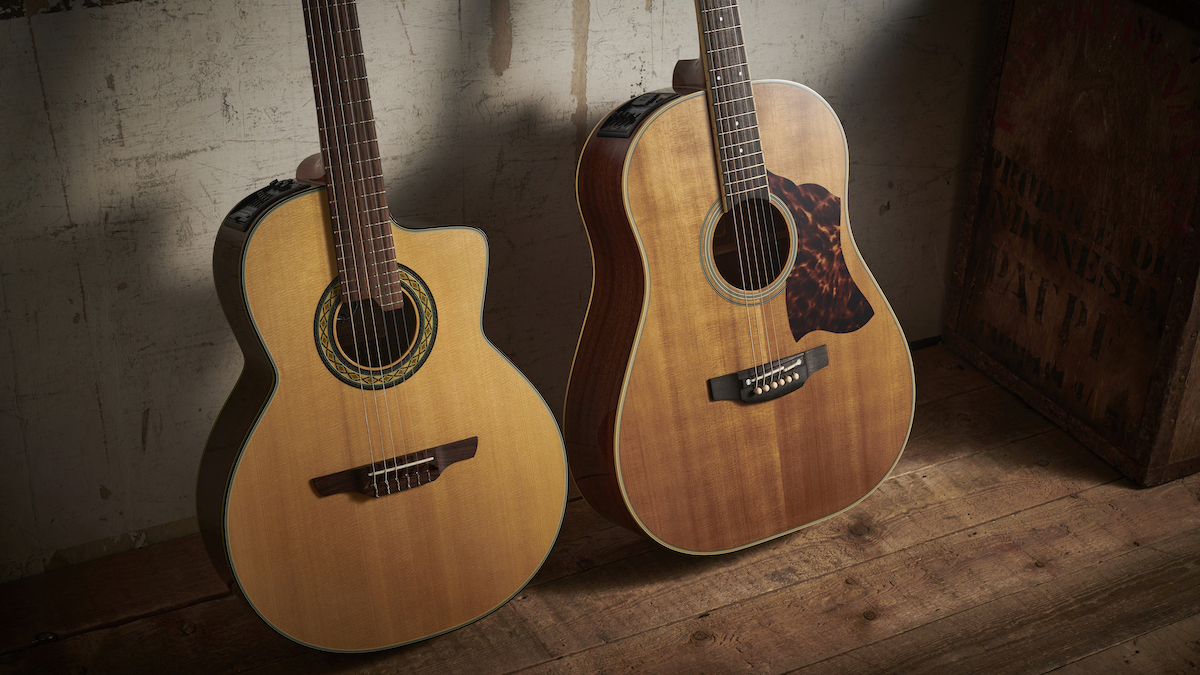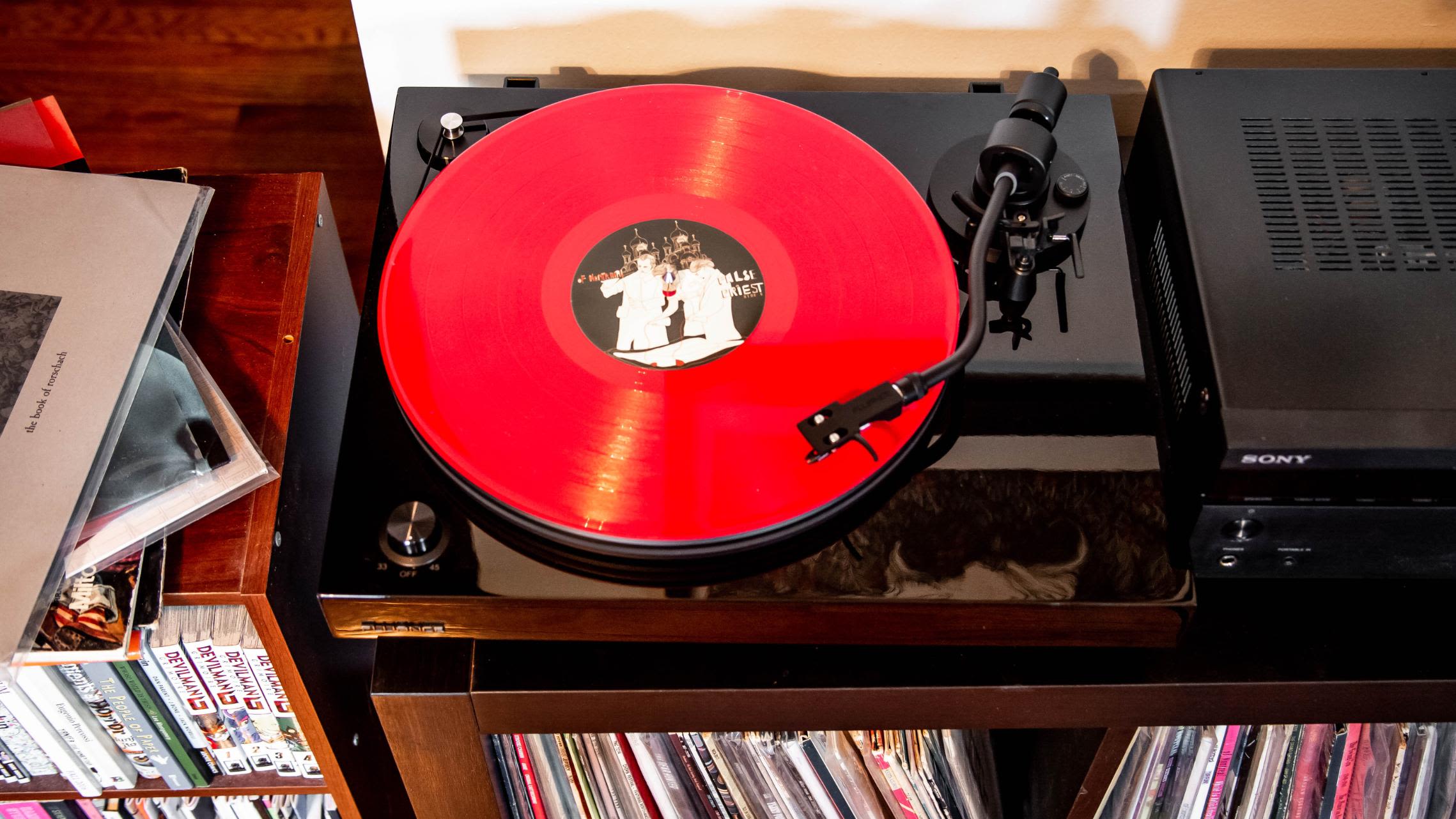Home>Genres>Classical>What Is The Difference Between Classical And Acoustic Guitar


Classical
What Is The Difference Between Classical And Acoustic Guitar
Modified: March 11, 2024
Discover the key distinctions between classical and acoustic guitars. Understand the unique tonal qualities and playing styles of classical guitars in comparison to their acoustic counterparts.
(Many of the links in this article redirect to a specific reviewed product. Your purchase of these products through affiliate links helps to generate commission for AudioLover.com, at no extra cost. Learn more)
Table of Contents
Introduction
The world of stringed instruments is rich and diverse, with countless variations and styles to choose from. Two popular options for aspiring musicians are the classical guitar and the acoustic guitar. While both instruments share similarities, they also have distinct characteristics that set them apart.
The classical guitar, also known as the Spanish guitar, has a long and illustrious history dating back centuries. It is often associated with classical music and the elegant melodies of composers like Mozart and Beethoven. On the other hand, the acoustic guitar is a versatile instrument that is commonly used in a wide range of musical genres, including folk, country, and rock music.
In this article, we will explore the key differences between classical and acoustic guitars, allowing you to make an informed decision when choosing which instrument is right for you. We will examine the physical differences, construction materials, sound characteristics, playing techniques, and even the cost and availability of these two types of guitars.
Whether you’re a budding musician or simply curious about the intricacies of these instruments, join us on this journey as we delve into the world of classical and acoustic guitars.
Definition of Classical Guitar
The classical guitar is a type of guitar that is specifically designed for playing classical music. It is characterized by its nylon strings, wider neck, and softer sound compared to other types of guitars like the electric or acoustic. The origins of the classical guitar can be traced back to the 17th century in Spain, where it was commonly known as the “Spanish guitar.”
One of the defining features of the classical guitar is its construction. The top of the guitar, known as the soundboard, is typically made of solid wood such as cedar or spruce. This gives the instrument a warm and resonant tone. The back and sides of the guitar are often made of rosewood or mahogany, which further enhances the instrument’s rich sound.
The neck of the classical guitar is wider and flatter compared to other guitars. This allows for easier fingerpicking and intricate chord voicings, which are often utilized in classical music. The fingerboard is typically made of ebony and is smooth, aiding in the smooth movement of the player’s fingers along the strings.
The classical guitar is known for its softer and more delicate sound. This is partly due to its use of nylon strings, which produce a warmer and mellower tone compared to the bright and piercing sound of steel strings. The use of nylon strings also results in less tension on the guitar neck, enabling players to execute complex fingerstyle techniques with greater ease.
In terms of playing technique, classical guitarists typically use their fingers or fingernails to pluck the strings, as opposed to using a pick or plectrum. This allows for greater control and precision, enabling the performer to express the subtle nuances of the music.
While the classical guitar is primarily associated with classical music, it is also used in various other genres, including flamenco, Latin, and contemporary acoustic music. Its versatility and unique sound make it a popular choice among musicians of all backgrounds.
Definition of Acoustic Guitar
The acoustic guitar is a versatile instrument that is commonly used in a wide range of musical genres. It is known for its ability to produce a natural, unplugged sound without the need for any amplification or external equipment. Unlike the electric guitar, which requires an amplifier to be heard, the acoustic guitar is designed to resonate and project sound on its own.
One of the primary features that distinguish the acoustic guitar from other types of guitars is its soundboard. The soundboard is the top part of the guitar that vibrates and produces sound when the strings are plucked or strummed. It is typically made of solid wood, such as spruce or cedar, although some acoustic guitars may have a laminated top. The type of wood used affects the tone and resonance of the instrument.
Another notable characteristic of the acoustic guitar is its steel strings. Unlike the nylon strings of a classical guitar, steel strings produce a brighter and more vibrant sound. They also require more finger pressure to play, which can be challenging for beginners. However, the use of steel strings offers a wider dynamic range and allows for more aggressive playing styles.
The neck of an acoustic guitar is usually narrower and thinner than that of a classical guitar. This allows for easier chord formations and faster finger movements, particularly for players who prefer strumming or playing complex chord progressions.
Acoustic guitars are commonly played with either a pick or fingers. Using a pick gives a crisp and defined sound, ideal for strumming chords or playing melodies. Fingerstyle playing, on the other hand, involves plucking the strings with the fingers, allowing for greater control and versatility in creating patterns and melodic lines.
What sets the acoustic guitar apart is its versatility. It is used in a vast array of musical genres, including folk, country, blues, pop, rock, and more. Its ability to be played solo or in a band setting makes it a popular choice for both beginners and experienced musicians alike.
Whether you want to strum chords around the campfire or perform intricate fingerstyle arrangements, the acoustic guitar offers a wide range of possibilities and a timeless sound that continues to capture the hearts of musicians and listeners alike.
Physical Differences
When comparing the classical guitar and the acoustic guitar, there are several physical differences that are worth noting.
The first noticeable difference is the shape and size of the body. Classical guitars typically have a smaller, more compact body shape, resembling a figure-eight or hourglass shape. This design is intended to optimize the projection and resonance of the instrument’s sound. Acoustic guitars, on the other hand, come in various body shapes, including dreadnought, concert, and jumbo. These larger bodies produce a louder and more robust sound, making them well-suited for playing in an ensemble or in a live setting.
Another distinguishing factor is the type of strings used. Classical guitars use nylon strings, which are softer and smoother on the fingers. These strings produce a warm and mellow tone that is characteristic of the classical guitar sound. Acoustic guitars, on the other hand, typically use steel strings, which are brighter and louder. Steel strings allow for more dynamic playing and are often preferred in genres like folk, country, and rock.
The neck of the classical guitar is wider and flatter than that of an acoustic guitar. This wider neck allows for easier fingerpicking and intricate chord voicings, which are commonly used in classical music. Acoustic guitars have a narrower neck, making it easier to fret and play complex chords and fast-paced melodies.
The fingerboard, or fretboard, also differs between the two types of guitars. Classical guitars often have a fingerboard made of ebony or rosewood, known for their smooth texture and durability. Acoustic guitars may use similar materials or may opt for alternatives like maple or synthetic composites.
Overall, the physical differences between classical and acoustic guitars affect the playability, tone, and versatility of the instruments. Whether you prefer the compact and intimate feel of a classical guitar or the larger body and vibrant sound of an acoustic guitar, understanding these physical differences can help you make an informed decision when choosing the right instrument for your musical journey.
Construction Materials
The construction materials used in classical guitars and acoustic guitars contribute to their overall sound, durability, and aesthetics.
In classical guitars, the top of the instrument, also known as the soundboard, is typically made of solid wood. Common choices include spruce and cedar, each providing a unique tonal quality. Spruce is known for its clarity and brightness, while cedar offers a warmer and more resonant sound. The back and sides of classical guitars are often made of rosewood or mahogany, which add depth and richness to the instrument’s tone.
Acoustic guitars, on the other hand, may feature a range of construction materials for the soundboard, including spruce, cedar, mahogany, or even exotic woods like koa or maple. The back and sides of acoustic guitars can also be made of various woods, with rosewood, mahogany, and maple being popular choices. These different wood combinations contribute to the tonal characteristics of the instrument, offering a wide range of sound possibilities.
Both classical and acoustic guitars typically have a neck made of mahogany or another sturdy wood. Mahogany is valued for its stability and resonance, making it a common choice for guitar necks. The fingerboard, where the player presses down on the strings, is often made of ebony or rosewood, providing durability and a smooth playing surface.
The choice of construction materials also affects the overall aesthetic of the guitar. Classical guitars often feature intricate wooden rosettes around the soundhole and decorative bindings along the edges. Acoustic guitars may have different finishes, such as natural, sunburst, or even vibrant colors, allowing for more varied visual expressions.
It is worth noting that there are variations within each type of guitar, with different manufacturers using their own preferred materials and techniques. Moreover, the quality and grade of the materials used can also impact the overall tone and playability of the instrument.
Whether you appreciate the traditional elegance of classical guitar construction or the versatility and customizable options of acoustic guitars, the choice of construction materials is an important consideration that can greatly influence your playing experience and the sound you can achieve.
Neck and Fingerboard
The neck and fingerboard of a guitar play a crucial role in the playability and comfort of the instrument. When comparing classical and acoustic guitars, there are notable differences in the design and characteristics of their necks and fingerboards.
The neck of a classical guitar is typically wider and flatter than that of an acoustic guitar. This wider neck allows for more space between the strings, making it easier to execute complex fingerpicking patterns and play intricate chord voicings. The flat profile of the neck also facilitates smoother and more precise thumb positioning for techniques like thumb-slaps or thumb-rest strokes.
On the other hand, acoustic guitars generally have a narrower neck, making it easier to wrap your hand around it and reach across the fretboard. The narrower neck allows for faster and more comfortable chord transitions and enables players to execute intricate lead lines or solos with greater dexterity.
The fingerboard, also known as the fretboard, is the surface on which the player presses down on the strings to change pitch. In classical guitars, the fingerboard is traditionally made of ebony or rosewood. These hardwoods are known for their smooth texture, durability, and ability to enhance sustain and resonance.
Acoustic guitars may also feature fingerboards made of ebony or rosewood, but other options like maple or synthetic materials are also common. The choice of fingerboard material can affect the feel and tonal characteristics of the instrument. For example, ebony is favored for its smoothness and rich tonal response, while maple can lend a brighter and snappier sound.
Both classical and acoustic guitars employ frets along the fingerboard to mark specific intervals and aid in accurate finger placement. The number of frets can vary, although most guitars typically have between 19 and 22 frets. The spacing of the frets remains consistent between the two types of guitars, allowing players to navigate the fingerboard and play melodic passages with precision.
Ultimately, the choice between a wide and flat neck found on classical guitars and a narrower neck found on acoustic guitars depends on personal preference, playing style, and the musical genres you intend to explore. Whether you prioritize the ability to perform intricate classical pieces or desire the agility for fast-paced acoustic or rock playing, the neck and fingerboard of the guitar play a vital role in your overall playing experience.
Sound Characteristics
The sound characteristics of a guitar are a significant factor in determining its tonal qualities and suitability for various musical styles. When comparing the sound of classical and acoustic guitars, there are distinct differences that arise from their construction, strings, and playing techniques.
Classical guitars are known for their warm, mellow, and balanced sound. This is largely due to the use of nylon strings, which produce a softer and more rounded tone compared to steel strings. The nylon strings give the classical guitar a rich and resonant sound, making it well-suited for classical music and other genres that require a more delicate and nuanced approach.
Acoustic guitars, often equipped with steel strings, produce a brighter and more vibrant sound. The steel strings create a greater attack and sustain, resulting in a more pronounced and dynamic sound. This characteristic makes acoustic guitars versatile for various genres such as folk, country, blues, and rock, where the instrument needs to cut through the mix and provide a strong presence.
The body shape and size of the guitar also play a role in sound projection and resonance. Classical guitars tend to have a smaller body, which contributes to a softer, intimate sound. Acoustic guitars, with their larger bodies, produce a louder and more booming sound, making them suitable for larger venues or playing in a band setting.
Another factor that influences the sound characteristics is the choice of tonewoods. Classical guitars often utilize tonewoods like cedar or spruce for the top, which provide warmth and depth to the sound. The back and sides made of rosewood or mahogany add richness and complexity to the overall tone. Acoustic guitars, on the other hand, may employ a wider range of tonewoods, including mahogany, maple, rosewood, or even koa, each with its distinct tonal properties.
Playing style and technique also contribute to the sound characteristics of both types of guitars. Classical guitarists often use fingerstyle techniques, relying on the nails or fingertips to pluck the strings. This technique allows for articulate and expressive playing, bringing out the nuances of the music. Acoustic guitarists frequently use a combination of strumming and fingerpicking techniques, allowing for a wide range of rhythmic patterns and dynamic variations.
Ultimately, the choice between the sound characteristics of classical and acoustic guitars depends on personal preference, musical genre, and playing style. The classical guitar offers a warm and delicate sound that is ideal for classical music and intimate performances. The acoustic guitar provides a brighter and more vibrant sound that can cut through in various genres and settings. Consider these factors when selecting the instrument that best aligns with your musical goals and preferences.
Playing Techniques
The playing techniques used on classical and acoustic guitars differ based on the musical styles and purposes for which they are designed. While both instruments can be played using similar basic techniques, certain nuances and differences make each guitar unique in terms of playing styles.
The classical guitar is predominantly played using fingerstyle technique, also known as fingerpicking. This technique involves plucking the strings with the fingertips or fingernails of the right hand, while the left hand holds down the strings on the fretboard to produce different notes. Classical guitarists often use a combination of the thumb, index, middle, and ring fingers to execute intricate melodies, arpeggios, and chords. The use of fingerpicking allows for precise control over dynamics, articulation, and the ability to bring out individual voices within a piece of music.
Acoustic guitars, on the other hand, offer more flexibility when it comes to playing techniques, accommodating various styles and genres. While fingerpicking is commonly used on acoustic guitars as well, players also frequently employ strumming techniques using a pick or their fingers. Strumming involves brushing or striking the strings with a pick or strumming fingers in a rhythmic motion. This technique allows for a fuller, percussive sound when playing chords or creating rhythmic patterns. Additionally, acoustic guitarists may incorporate percussive techniques such as tapping or slapping the body of the guitar to create rhythmic accents or special effects.
Both classical and acoustic guitars can utilize techniques like hammer-ons, pull-offs, and slides to add embellishments and variations to their playing. These techniques involve quickly pressing or releasing a finger on a string to produce a new note without picking the string again or shifting the left hand position. These techniques are often used to add fluidity and expressiveness to melodies or solos.
Harmonics, another essential technique, are produced by lightly touching the strings at specific locations to create bell-like tones. These harmonics can be found at various places along the length of the string, producing different pitches. Classical guitarists often incorporate harmonics into their compositions to add ethereal and vibrant sounds, while acoustic guitarists may utilize them to create unique effects in their playing.
It is important to note that while fingerstyle technique is commonly associated with classical guitar, it is also employed in acoustic guitar playing. Similarly, strumming and rhythmic techniques can be used in classical guitar music. The choice of technique largely depends on the preferences of the player and the style of music they are performing.
Regardless of the guitar style and technique chosen, mastering the various techniques through practice and dedication is crucial for becoming a proficient and versatile guitarist. The playing techniques open up a world of possibilities for expressing emotions and creating captivating music on both classical and acoustic guitars.
Musical Styles
When it comes to musical styles, both classical and acoustic guitars offer a versatile range of possibilities. While classical guitar has a strong association with classical music, it is not limited to this genre alone. On the other hand, acoustic guitars are known for their adaptability and can be found in a wide variety of musical styles and genres.
The classical guitar is deeply rooted in classical music, where it is renowned for its ability to capture the nuances and intricacies of compositions from the Renaissance, Baroque, Classical, and Romantic periods. It is the instrument of choice for performing the works of renowned composers such as Bach, Mozart, Beethoven, and Villa-Lobos. The warm and delicate sound of the classical guitar lends itself to the expressive and intimate nature of classical music.
In addition to classical music, the classical guitar is also featured prominently in other genres such as flamenco and Latin music. In flamenco, the guitar interacts with the passionate rhythms and intricate dance movements, while in Latin music, the guitar adds a rhythmic backbone and melodic embellishments to the vibrant compositions.
Acoustic guitars, with their versatile sound and adaptability, are found in a diverse array of musical styles. In folk music, acoustic guitars are a staple instrument, accompanying storytelling and conveying heartfelt emotions. In country music, acoustic guitars provide the rhythmic foundation for twangy melodies and lyrical storytelling. They are also a key component in pop and rock music, either strummed for powerful chord progressions or fingerpicked for intricate melodies and solos.
Acoustic guitars can be seen in various subgenres like blues, where they bring soulful expressions and captivating slides to the forefront. In jazz, acoustic guitars often provide rhythm and harmony, blending with other instruments to create a mellow and sophisticated sound. They are also present in singer-songwriter compositions, where the acoustic guitar takes center stage, supporting introspective lyrics with melodic and harmonic accompaniment.
Furthermore, acoustic guitars are chosen by many aspiring musicians who are just starting their musical journey. Its accessibility and versatility make it an ideal instrument for beginners to experiment with different styles and techniques, from strumming simple chords to fingerpicking complex patterns.
Ultimately, whether you are drawn to the classical guitar’s timeless elegance and connection to classical music or the acoustic guitar’s ability to adapt to various genres, both instruments provide a world of musical possibilities. The choice between the two largely comes down to your musical preferences and the styles of music you wish to explore.
Cost and Availability
When considering any musical instrument, the cost and availability are important factors to consider. Both classical and acoustic guitars come in a wide range of prices, depending on factors such as brand, craftsmanship, materials, and overall quality.
Classical guitars can vary in price, ranging from affordable beginner models to high-end professional instruments. Entry-level classical guitars can be found at relatively affordable prices, making them accessible to beginners or those on a budget. As you move up in quality and craftsmanship, the price of classical guitars tends to increase. High-end classical guitars, crafted by skilled luthiers using premium tonewoods and meticulous construction, can command significant prices.
Acoustic guitars also offer a wide range of price points. Beginner acoustic guitars are available at affordable prices and are often mass-produced, providing decent quality for those starting out. Mid-range acoustic guitars that offer better craftsmanship and tonewoods can be a step up in terms of price. Premium acoustic guitars, made by renowned manufacturers or custom builders, can be quite expensive and cater to professional musicians and enthusiasts seeking the utmost quality and craftsmanship.
The availability of both classical and acoustic guitars is generally high. They can be purchased from a variety of sources, including music stores, online retailers, and private sellers. Local music stores often have a good selection of both classical and acoustic guitars, allowing you to try them out before making a purchase. Online retailers provide a wide range of choices and competitive pricing, making it convenient to browse and compare different models and brands. Private sellers can be an option for finding used guitars, potentially offering lower prices, but it’s essential to check the condition and authenticity of the instrument before buying.
Additionally, it’s worth noting that the availability of specific models, brands, or higher-priced instruments may vary depending on location and demand. It’s advisable to research and consult with trusted guitar experts or experienced musicians to ensure you are making an informed decision and getting the best value for your budget.
When considering cost and availability, it’s important to strike a balance between your budget and your desired quality. Understanding your own needs, preferences, and long-term goals as a musician will help guide your decision in finding the right instrument that fits within your budget and is readily available.
Conclusion
In the world of guitars, classical and acoustic instruments hold their own unique charm and characteristics. While the classical guitar is renowned for its association with classical music and its warm, mellow sound, the acoustic guitar offers versatility and adaptability across various genres and playing styles.
From the physical differences, construction materials, and sound characteristics to the playing techniques, musical styles, and cost and availability, there are distinct factors to consider when choosing between the two types of guitars.
If you are drawn to the refined elegance of classical music or desire to explore genres like flamenco and Latin, the classical guitar may be your ideal choice. Its wider neck, nylon strings, and delicate sound offer a platform for intricate fingerpicking and expressive playing.
On the other hand, if you seek a versatile instrument that can handle various genres such as folk, country, rock, or blues, the acoustic guitar may be the right fit. Its steel strings, narrower neck, and ability to cut through in ensemble situations make it a popular choice among musicians of different backgrounds and styles.
Ultimately, the decision between classical and acoustic guitars depends on your personal preferences, musical goals, and the genres you wish to explore. Consider factors such as playing technique, tonal characteristics, and even budget and availability when making your choice.
Whether you choose the classical guitar for its timeless elegance and connection to classical music or the acoustic guitar for its versatility and adaptability across genres, both instruments offer a wealth of musical opportunities and a lifelong journey of self-expression and creativity.
Whichever path you choose, embrace the joy of playing, continue to learn and grow as a musician, and let your guitar unlock the beauty of music in your hands.











